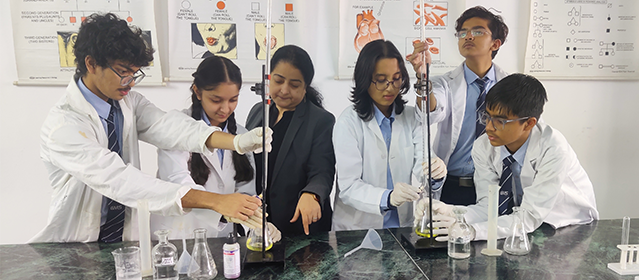
Six students from CMS Cambridge Gomti Nagar Extension Lucknow in India won the Best in Region for their study into the contamination of the Gomti River in the Lucknow region.
Adriti Sharma, Vyapti, Atulya Tripathi, Kartik Arora, Mahi Muhammad, and Tejaswi Tripathi took water samples from two different sections of the Gomti river – an important water source to many cities. They tested the water’s pH, total dissolved solids level and colony-forming units (microbes) count, comparing them to tap water and well water, which they also tested. Their goal was to find out whether water taken from the Gomti was safe to drink.
Using a pH meter, the team found that the river water from both locations was alkali, suggesting a high concentration of basic salts, which can pose health risks if consumed over a prolonged period. After conducting microbial tests using petri dishes and an incubator, and tests for heavy metals using a TDS indicator, the team found large amounts of heavy metals and microbes in the river samples. More worrying however, was that the team also found that the tap water (from the Gomti but after water processing) also had levels of contamination above that of the World Health Organization permissible limits.
The judges were highly impressed by the study and said: 'Through their work the students have presented themselves as proponents of real change and their submission would be a valuable resource for a number of stakeholders in water quality, from student peers through to government bodies. In short, this is a brilliant, in-depth and scientifically excellent project.'
Reflecting on their project, the team wrote: 'This experience has resonated with us beyond mere water testing. It was a challenge, a lesson and definitely left a lasting impact on us. We are extremely grateful that our hard work has paid off in the form of this recognition.'

